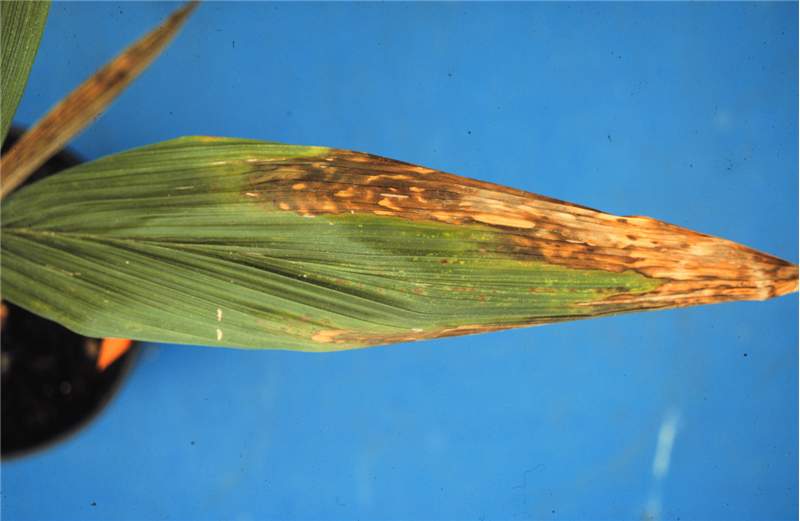Soil Soluble Salts Injury
|
Figure 1. Leaf tip necrosis caused by high soil soluble salts on Syagrus romanzoffiana seedling. Photo by T.K. Broschat.
|
Symptoms
Palms suffering from high soil soluble salts usually have necroticnecrotic:
see necrosis
leafletleaflet:
divisions of pinnate leaves
tips on middle-aged and older leaves (Fig. 1). New foliage may express typical iron deficiency symptoms or wilting due to reduced root surface area for nutrient and water absorption. Roots will often have necroticnecrotic:
see necrosis
tips or more extensive necrosisnecrosis:
dead tissue, usually desiccated and brown to gray in color
due to secondary root rots.
May be confused with
Toxicities of micronutrients such as boron and water stress can cause similar symptoms.
Cause
High soil soluble salts can be caused by excessive fertilization or the use of saline irrigation water in both container production and in the landscape or field nursery. In landscapes or field nurseries, salt water intrusion in low lying coastal areas is another source of soil salts. High salt concentrations can cause desiccation of root and other plant tissue.
Occurrence
Soluble salts injury can occur under landscape conditions, particularly in drier climates where rainfall or irrigation is insufficient to leach out excess salts from the soil. Palm species differ greatly in their susceptibility to soluble salts injury. Cocos nucifera, Phoenix spp., Hyophorbe spp., Thrinax spp., Coccothrinax spp., Allagoptera arenaria, and Serenoa repens are highly tolerant of high soil soluble salts.
Additional comments
Visual symptoms plus soil soluble salts analysis are needed to diagnose this disorder.



